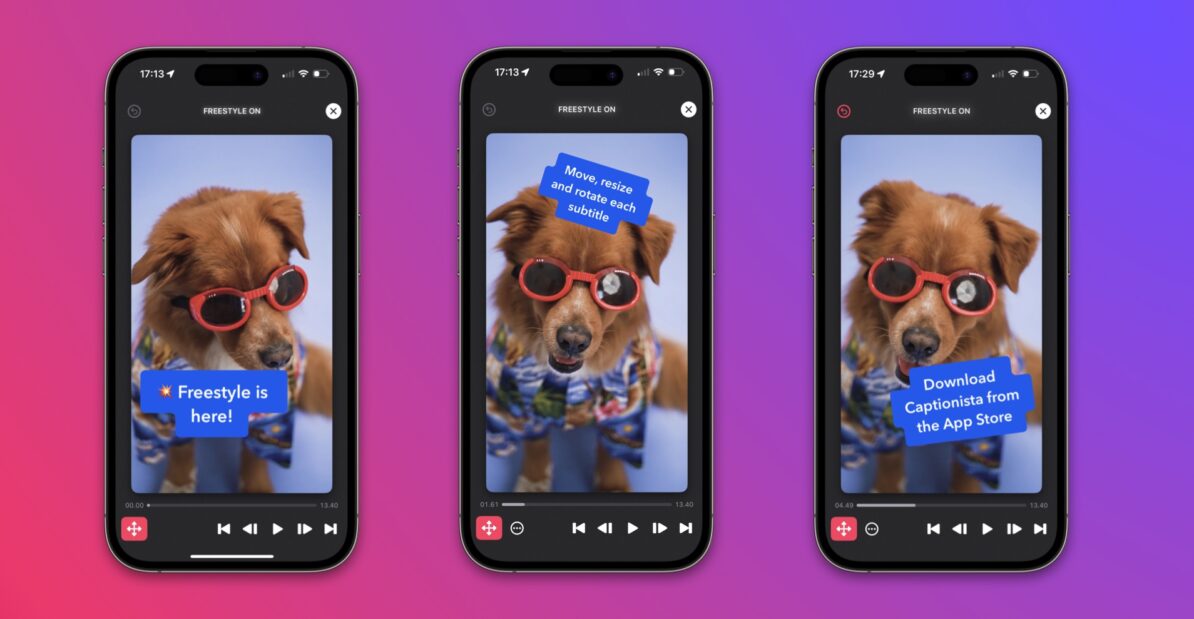Back in late August 2022 we launched version 1.0 of our social video subtitling app Captionista into a crowded segment dominated by huge players including CapCut which is owned by the company behind TikTok. This makes App Store Search ads way too expensive for the keywords we need.
As we were just this week posting videos as part of the marketing, we tried paid video ads to see if that might move the needle. We’ve experimented a little before, but this time we spent more over a shorter period.
TL:DR; Sad trombone sound with a spicy twist.
Call the plumber, I think our funnel is blocked!
When we released Captionista it was received very well by some sites including MacStories, TechRadar and Stuff. It’s an app primarily targeted at social media professionals, journalists and casual users who care more than most about the quality of their subtitles.
However, as is all too familiar for many indie apps, we’re not yet getting a significant amount of installs. This is a polite way of saying our download stats suck! Without a regular flow of ratings we rank really low in App Store search results — the classic chicken-and-egg user acquisition problem: we won’t get downloads to generate ratings, so we won’t rank in search and get downloads.
We recently posted these short videos promoting specific new features, so we boosted a single video that was a Reel on Instagram and a post on TikTok. Normally these videos get 200 or so views in the first couple of days, rising to maybe 800-1000 over the long term. You can see the video here.
Both campaigns were set to spend up to £90 over 3 days mid-week. This is definitely not a lot of money, about $100 for each ad but if this was sustained all month it would be a large budget circa £900/mo which would be pretty huge commitment for an indie.
It is also 100% true that these are not hugely compelling videos, but we still learned plenty. Here’s what happened…
Instagram first attempt — stalled and cost nothing
The first campaign was set up with a slightly constrained audience with some interests like social marketing.
After a day Instagram had the ad live but had shown it to zero people. I stopped the campaign and created it the same again but with an auto-managed audience to see if my audience was the problem.
Instagram second attempt — a big fat zero again
Yep, same thing. We just could not get Instagram to serve the ads. Literally 0 views of the ad, and exactly £0 charged. Come on and take my money Zuck, what’s wrong with you?!

Maybe the videos were not viewed for long enough because they were so boring or unsuitable for the any audience in the world and Instagram don’t count very short plays as a view? It would surprise me if Facebook/Meta are this generous.
TikTok — we’re stars now! Oh wait…
With the disappointing Instagram experience running in parallel, TikTok was a complete contrast!
An impressive start
Quite quickly after starting the campaign we saw some impressive view stats, in line with the estimated range from the ad setup pages (7500-20000 or so). What’s more we started seeing a lot of likes too! We were excited.
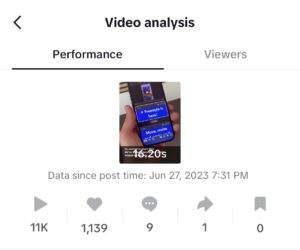
Pretty soon however, it’s clear that something seems off. Here’s some more statistics mid-campaign. Over 29000 views, over 2500 likes…

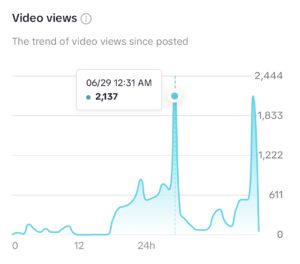
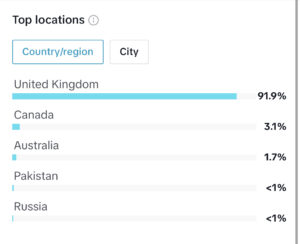
So let’s get this straight… roughly 10% of views result in likes. Seems… high.
A quick scan and it seems almost all of those users liking are private “whatever23443549” accounts, very few have any actual posts or normal-looking IDs or follower counts etc.
What’s more, with quite low hourly views on average the very large spikes around 12:30 AM and 2:30 PM stand out like a sore thumb. At over 93% of views coming from the UK one has to wonder why so many brits are being shown our quite boring video between midnight and 1AM, let alone mid-afternoon? Perhaps these are peak viewing times in the UK, but it looks strange.
Does this really add up?
Here’s some more mid-campaign statistics:
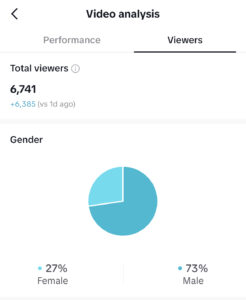


Over 6700 distinct viewers… yielding over 29000 views, so about 4 views on average per person.
And yet… the Retention Rate graph tells us that the vast majority of views stop in under two seconds. This is hard to reconcile with the distinct viewers and views per person. It hinges a lot on what a “view” means. Unless… dare I say it these numbers are just completely made up?
With a whopping 17 followers it seems unlikely that over 3.5% of the views came from our followers, despite what the stats say.
Rise of the robots

8 comments on over 23000 views at the time that screenshot was taken seems quite low but even at this level I don’t know about you, I’m not sure they’re genuine. Could it be… robots?
So are TikTok scamming us?
It certainly feels like it is the case. With ads generating huge numbers of non-engaging views one has to be suspicious here. It’s not like the apparent bots are even trying to get us to follow them or message them like they would on Twitter.
The only discernible purpose so far is to justify TikTok’s ad charges — and of course while viewers might see you have sponsored a post at the time, people who visit your profile or video later only see that you had 29K+ views and 1000s of likes, they don’t know that you paid for those.
It feels like a Ponzi-like Scheme for views. If you want to look popular, pay. For some people £90 isn’t much to pay for a profile that makes you look like you’re good at this TikTok thing.
I’m pretty sure that for us at least this is not money well spent.
The final score card
At the end of both campaigns we end up with the following:
| Metric | Outcome |
|---|---|
| Views | Zero |
| Likes | Zero |
| Comments | Zero |
| Follows | Zero |
| Clicks to App Store | Zero |
| App Downloads | Zero |
| Total cost | £0 |
TikTok
| Metric | Outcome |
|---|---|
| Views | 32859 |
| Distinct Viewers | 16974 Apparently there were ~10,000 new distinct viewers in the last 24 hours of the campaign. This also seems quite suspicious. |
| Likes | 3223 This seems highly dubious that they are genuine given the average viewing time. |
| Comments | 38 Except, the video page clearly shows only 11 comments total. Where are the other 27? |
| Follows | 15 It’s hard to tell how many of these are genuine, I’m guessing close to zero. |
| Clicks to App Store | Unknown …but very low, less than 5 (see next) |
| App Downloads | Very low The best we can say is maybe 5 or so downloads, but that could be background noise |
| Total cost | £90 |
What’s more the viewer stats for the completed ad campaign in TikTok Business Suite vs. viewing the “More Data” stats on the post itself differ wildly in terms of demographics. For example the video analysis says 39% of the viewers are in the 18-24 age group but the final campaign statistics say 67% of the viewers are in the 13-17 group and 16% are in the 18-24 age group. Which is it?
It seems impossible to make sense of the TikTok stats, but it is very clear that at least with our sample video that advertising at this level does not provide meaningful returns, and casts doubt on all the statistics provided.
I don’t even know what is wrong with the Instagram ad mechanic. Presumably something about our content or budget but… they aren’t telling us.
Is this typical? What do you do?
Do you have a better experience with video ads for apps? Have you managed to juice installs other ways? Do we need to spend £500 on video ads and then magically we’ll get hundreds of downloads? Or do we need to spend £1000s?
I’d love to hear from you @marcpalmer@iosdev.space.
👉 Please do consider installing our app for free and then leave a rating for it in the App Store or in the App’s Help/Settings section. No need to write a review unless you feel compelled! Ratings helps us immensely. If you like it, even better!
